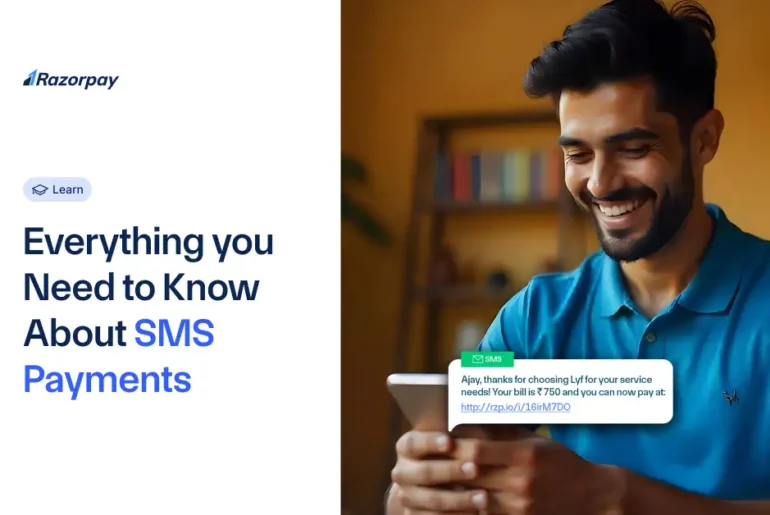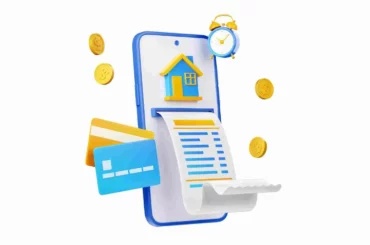SMS payments, or paying through text messages, have emerged as a convenient and secure payment solution for businesses and consumers alike. In this digital era, the ability to pay via SMS has transformed the way transactions are conducted, offering a fast and efficient alternative to traditional payment methods. Let’s dive into the world of SMS payment and explore its inner workings.
Table of Contents
What is SMS payment?
SMS payment refers to any transaction that is carried out using a simple text message. This innovative payment solution allows customers to complete purchases or make payments by sending an SMS from their mobile device. The business typically sends a text message to the customer, containing a link or instructions to facilitate the payment process. In some cases, customers can finalize the transaction by responding to the SMS with a confirmation code.
How do SMS payments work?
The mechanics of payment through SMS involve a few key steps:
1. The business sends a payment link to the customer via SMS.
2. The customer clicks on the link, which directs them to a secure, mobile-friendly payment page.
3. The customer enters their payment information or authorizes the transaction using a pre-saved payment method.
4. The SMS payment provider processes the payment securely.
5. The business receives the funds, minus any applicable fees.
Behind the scenes, a third-party mobile payment service provider handles the transaction-clearing process. They either deduct the payment from the customer’s prepaid balance or add the charges to their regular phone bill. Throughout the process, customer details are fully encrypted to ensure data security.
Examples of SMS Payment Services
Some notable examples of SMS payment services include:
1. Stripe Payment Links:
Allows businesses to create and share payment links via SMS, enabling customers to make payments securely without the need for a dedicated app or website.
2. PayPal Mobile:
Offers SMS to pay functionality, allowing customers to send money or make purchases using their PayPal account via text message.
3. Vodafone m-pesa:
A popular mobile money service in Africa and Asia that enables users to transfer funds, pay bills, and make purchases using SMS.
How to Choose an SMS Payment Solution?
When selecting an SMS payment service provider, businesses should consider the following factors:
1. Security:
Ensure that the provider adheres to industry-standard security protocols, such as PCI DSS compliance, to protect customer data and prevent fraud.
2. Ease of use:
Choose a payment solution with a user-friendly interface and straightforward setup process to minimise friction for both the business and its customers.
3. Integration:
Look for a provider that offers seamless integration with existing payment systems, such as UPI or credit card processing, to streamline the transaction process.
4. Pricing:
Compare the costs associated with different providers, including transaction fees, setup charges, and monthly subscriptions, to find a payment solution that fits your budget.
5. Customer support:
Opt for a provider that offers reliable customer support to address any issues or concerns that may arise during the implementation or use of the SMS payment service.
Benefits of payment by SMS
Implementing an SMS-to-pay system offers numerous advantages for businesses:
1. Broad reach:
With a high percentage of consumers owning text-enabled smartphones, SMS payments can reach a wide audience.
2. Quick response:
Text messages have an impressive open rate, with most consumers checking notifications within minutes of receiving them.
3. Improved cash flow:
SMS payment enables businesses to get paid promptly, enhancing financial efficiency.
4. Contactless transactions:
In the wake of the pandemic, contactless payments have gained popularity, and SMS payments fit perfectly into this trend.
5. Immediate invoicing:
Businesses can send SMS invoices immediately after a sale, encouraging timely payments.
6. Reduced fraud:
SMS payment systems help minimise risks associated with credit card fraud and counterfeit cash.
7. Diverse payment options:
Most SMS payment providers support various payment methods, including credit/debit cards, ACH, PayPal, and digital wallets.
Conclusion
SMS payment has revolutionised the way businesses and consumers transact, offering a fast, secure, and convenient Payment Solution. By leveraging the power of text messaging, businesses can reach a broader audience, streamline payment processes, and improve cash flow. When choosing an SMS payment provider, prioritise data security, user experience, and reliable customer support. With the right Payment service provider, businesses can harness the full potential of SMS to pay and take their payment operations to the next level.
Frequently Asked Questions (FAQs):
1. Is SMS payment secure for financial transactions?
Yes, reputable SMS payment providers employ robust security measures, including data encryption and PCI compliance, to safeguard sensitive financial information during transactions.
2. What types of transactions can be conducted through SMS payment?
SMS to pay can be used for a wide range of transactions, including product purchases, service payments, bill settlements, and charitable donations. Its versatility makes it a popular choice for businesses across various industries.
3. How do I set up SMS payments for my business?
To set up SMS payment for your business, follow these steps:
-
Choose a reliable SMS payment provider that meets your requirements.
-
Select a pricing Al based on your anticipated transaction volume.
-
Set up billing and create an account with the provider.
-
Configure customer contact processes and create message templates.
-
Opt to use your existing business phone number or a dedicated virtual number provided by the SMS payment provider.
4. Are there any fees associated with SMS payments?
Yes, SMS payment providers typically charge transaction fees, which may include a percentage of the transaction amount and/or a fixed fee per transaction. Some providers also offer package rates based on the volume of SMS sent.
5. What information is required to make an SMS payment?
To complete an SMS payment, customers usually need to provide:
-
Mobile phone number
-
Payment method details (e.g., credit/debit card information, digital wallet credentials)
-
Confirmation code or PIN (if applicable)
In some cases, customers may have the option to save their payment information for future transactions, streamlining the SMS-to-pay process even further.
By understanding the intricacies of SMS payment, businesses can leverage this powerful Payment Solution to enhance customer experience, streamline payment processes, and drive growth in the digital age.



